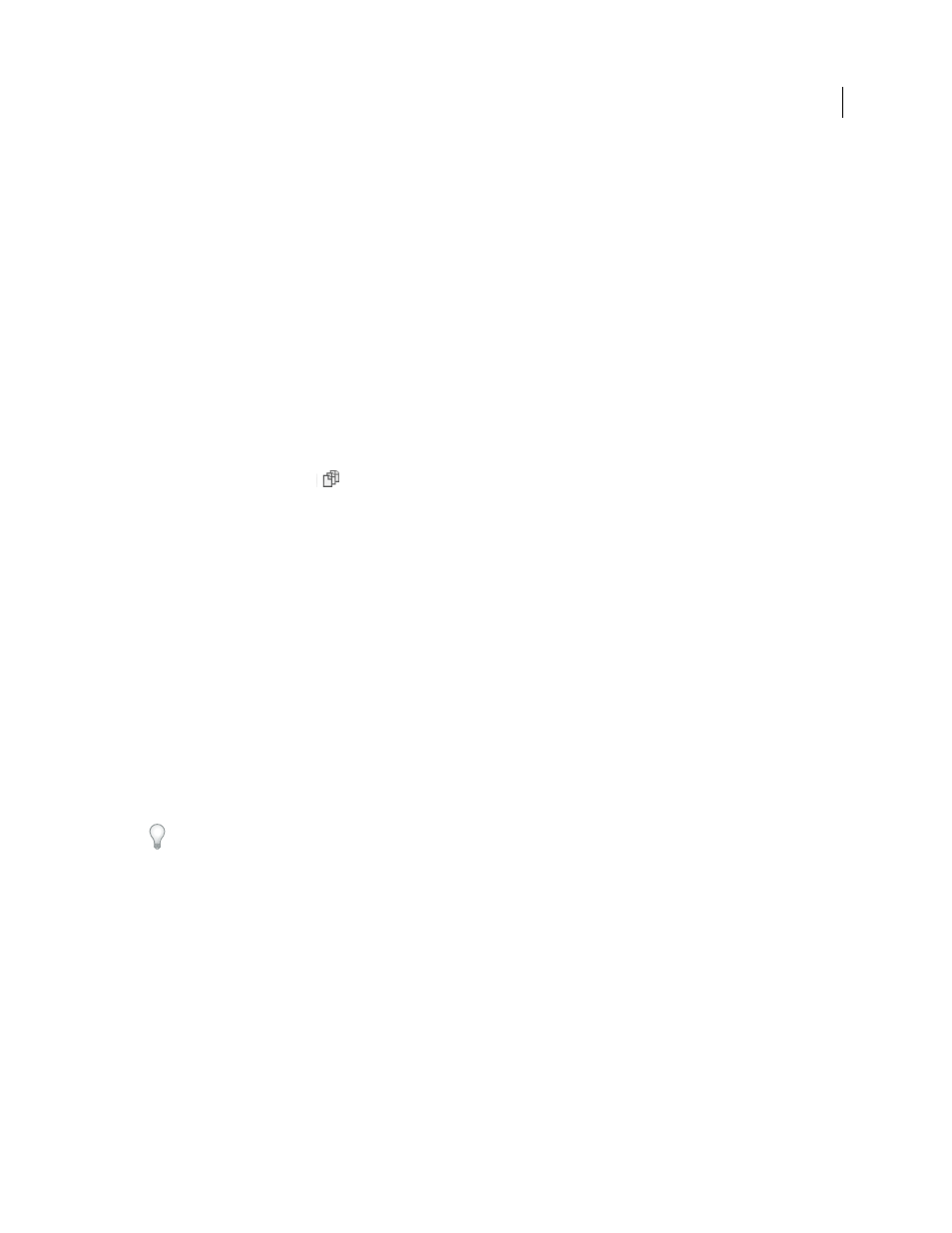Printing documents with multiple page sizes, Specifying pages to print, Specify paper size and page orientation – Adobe InDesign CS5 User Manual
Page 606

600
USING INDESIGN
Printing
Last updated 11/16/2011
Print Visible Guides and Baseline Grids
Prints visible guides and grids in the same color as shown in the document.
You can control which guides and grids are visible in the View menu. This option is unavailable when you are printing
separations.
Printing documents with multiple page sizes
You may want to print pages that have different sizes separately. An option in the Print dialog box makes it easy to
specify a range that selects all the pages of the same size in the document.
Before you submit a document with multiple page sizes for printing, ask the print provider about special requirements.
If you have difficulties printing a document with multiple page sizes, consider dividing it into separate documents.
1 Choose File > Print.
2 In the General panel, select or deselect Spreads to determine whether pages or spreads are printed.
If a spread includes pages of different sizes, the largest width and height on the spread determines the spread size.
3 To print only pages of the same size, use the options above the Range field to select one of the pages or spreads, and
then click the pages icon
.
The Range field displays all the pages or spreads of that size.
4 After printing a range of one page size, repeat the steps to print other page sizes.
Specifying pages to print
You can specify a page range using either absolute numbering (the page’s position in the current document) or
page/section numbering (the section and page numbers assigned to the page). By default, dialog boxes in InDesign
honor the format specified for Page Numbering in the Preferences dialog box.
•
When Absolute Numbering is selected, numbers you specify for pages or page ranges correspond to the absolute
position of pages in your document. For example, to print the third page in the document, you would enter “3” for
Range in the Print dialog box.
•
When Section Numbering is selected in the Preferences dialog box, you can enter pages and page ranges exactly as
they appear in your layout or using absolute numbering. For example, if the page labeled SecA:5 is the fifteenth page
in your document, you could print it by entering “SecA:5” in the Print dialog box or by entering “+15”. The “+” sign
indicates that you want to override the normal section and page numbering to use absolute page numbering.
If you are unsure which format to use when entering page numbers in the Print dialog box, imitate the format used
in the page box at the bottom of the document window.
Specify paper size and page orientation
It’s important to distinguish between page size (as defined in the Document Setup dialog box for your document) and
paper size (the sheet of paper, piece of film, or area of the printing plate you’ll print on). Your page size might be US
Letter (8.5-by-11 inches), but you might need to print on a larger piece of paper or film to accommodate any printer’s
marks or the bleed and slug areas.
The list of paper sizes available to InDesign comes from the PPD (PostScript printers) or from the printer driver (non-
PostScript printers). If the printer and PPD you’ve chosen for PostScript printing support custom paper sizes, you’ll
see a Custom option in the Paper Size menu.
Most imagesetters can accommodate regular paper sizes, such as letter and tabloid, as well as transverse orientation,
where the regular page size is rotated 90° when printed. The transverse orientation is often a more efficient use of
imagesetter media.
